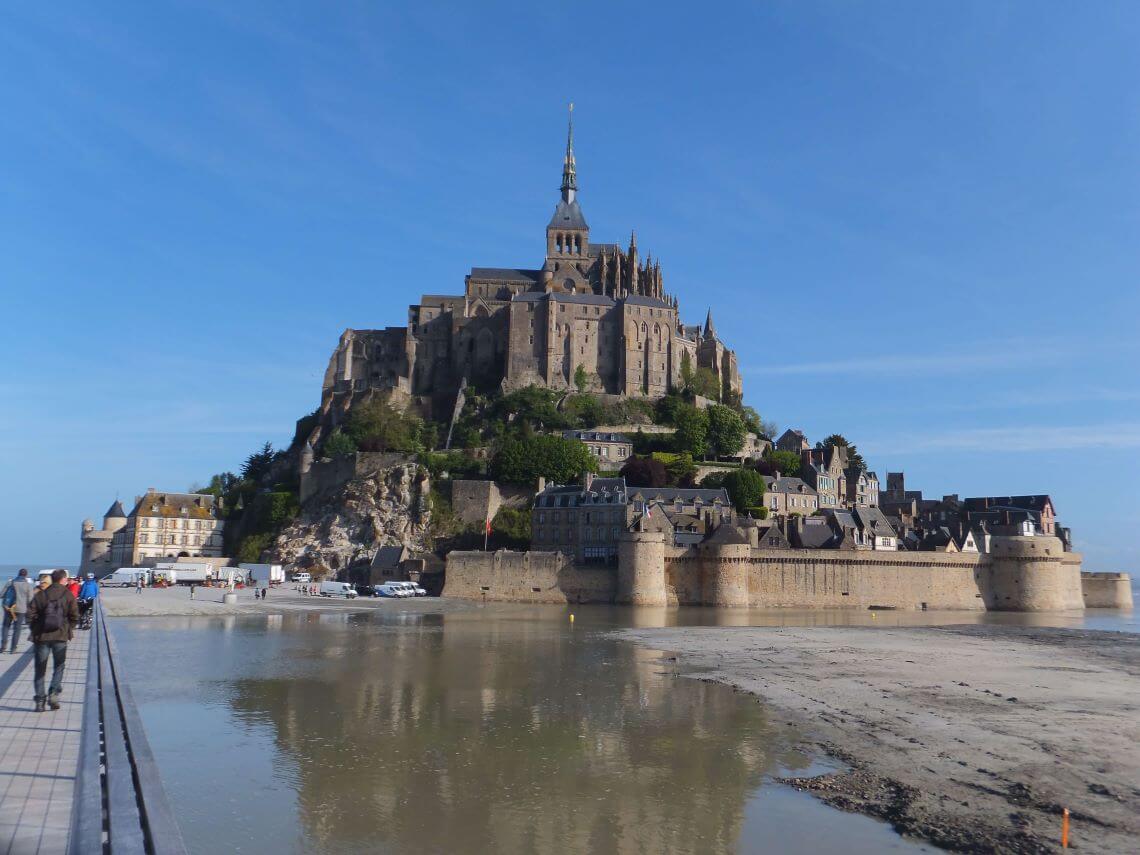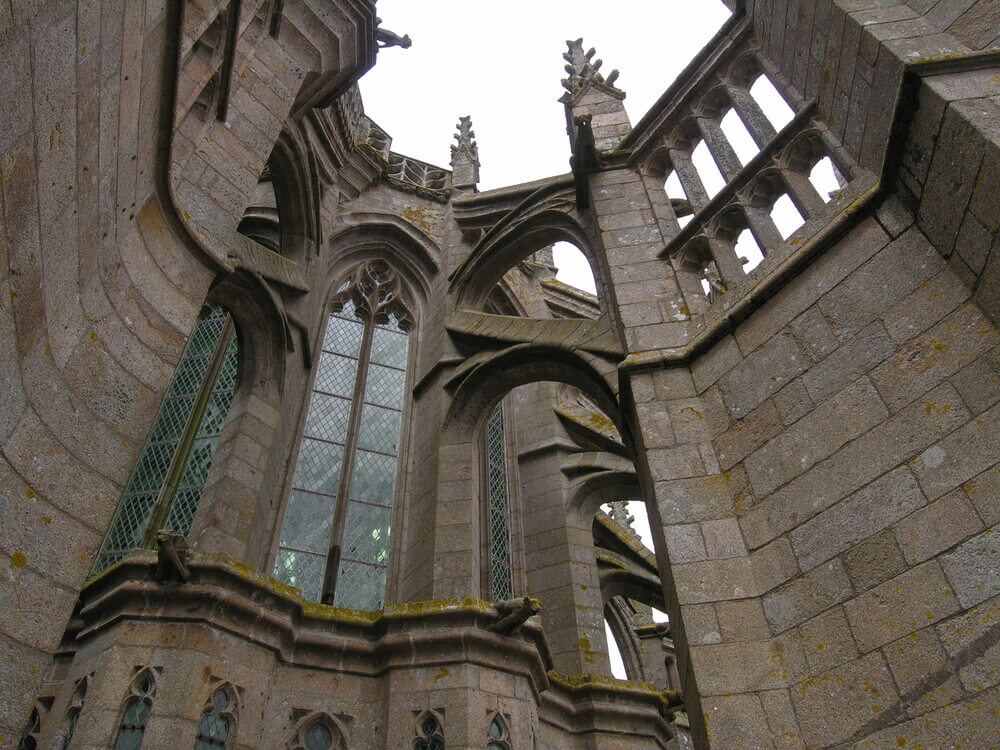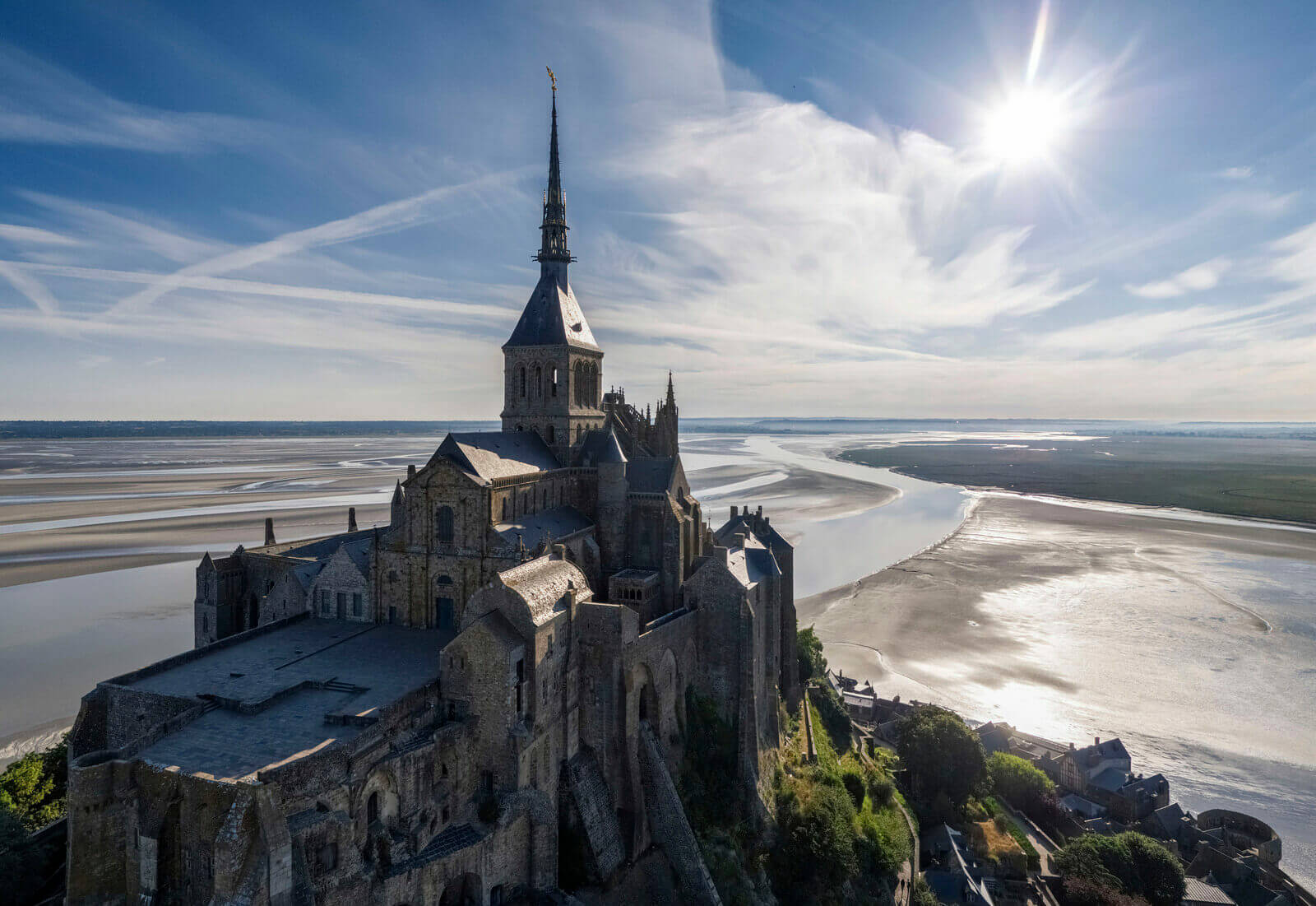ISABEL RUBIO ARROYO | Tungsteno
Mont Saint-Michel is much more than a rocky islet off the coast of Normandy. Surrounded by a bay where the tide can rise as high as 14 metres, it is one of France's top tourist attractions. As well as being an important pilgrimage site, it was once a prison. We look at the curiosities of this granite outcrop, whose constructions have been the inspiration for castles such as the one in the animated film Tangled and the city of Minas Tirith in The Lord of the Rings.
A place of pilgrimage that started from a dream
This small tidal island measures 240 acres—about 97 hectares—and is located in France, some 290 kilometres from Paris. According to legend, its history began with a dream. In 708, Archangel Michael appeared three times to Bishop Aubert of Avranches and asked him to build a shrine in his honour on a tidal island called Mont-Tombe. The dream came true and in 966, Duke Richard I of Normandy granted the Benedictine monks permission to settle there.
Thus this granite outcrop, which was to be renamed Mont Saint-Michel, became a very important place of pilgrimage throughout the Christian West. Pilgrims flocked to it in search of "protection and the salvation of their souls", according to the abbey's official website. At the same time, the monks began to produce, preserve and study a large number of manuscripts, which made the Gothic-style abbey an important centre of culture during the Middle Ages.
Mont Saint-Michel was an important pilgrimage site. Credit: Slice
A "Wonder of the West" surrounded by a bay
The construction of this "Wonder of the West" took place between the 11th and 16th centuries and is "a technical and artistic tour de force," says UNESCO. The abbey is the island's central and most prominent landmark. Its church is the "epicentre of a labyrinth of staircases" and stands on the highest point of the outcrop. To erect this 80-metre-high structure, four crypts were built around the four rock faces that support the building at the summit. In addition to the abbey, Mont Saint-Michel also has narrow cobbled streets, old houses and medieval ramparts around its base.
If there is one thing that makes the site unique, it is the water that surrounds it. "It has a magnetic effect on visitors because of its setting, the majesty of the tides, and the changing of the light," says Sébastien Daligault, a naturalist with Label Nature, who has been leading tours of the bay for more than two decades, in an interview with National Geographic. In the past, the outcrop became an island when the tide rose. Before the construction of a 910-metre causeway that once connected the island to the mainland, it was particularly difficult to reach because of quicksand and fast-rising tides. The concrete causeway was replaced in 2019 with a footbridge on stilts to allow the water to pass underneath.

In 1878, a causeway was built to facilitate access to the site. Credit: PxHere
The prison that saved the abbey from destruction
Mont Saint-Michel was not only a place of pilgrimages. In fact, pilgrimages took place until the 17th century, when the abbey was gradually transformed into a prison. Its spaces were renovated to house as many prisoners as possible. "This period of imprisonment, although dark, helped save the abbey from complete destruction," the abbey's website states.
The island, which was fortified in 1256, withstood sieges during the Hundred Years' War between England and France (1337-1453) and the French Wars of Religion (1562-1598). When the prison finally closed its doors in 1863, the abbey was totally dilapidated. It was then that restoration work began and the area around the site was developed to receive the first tourists in its history.

The construction of the abbey was "a technical and artistic tour de force," according to UNESCO. Credit: Francesco Bandarin / UNESCO
Today, three million tourists visit Mont Saint-Michel every year, according to UNESCO. The abbey is also home to a dozen monks from the Monastic Fraternities of Jerusalem. Its history and charm have made Mont Saint-Michel, a UNESCO World Heritage Site since 1979, one of the most popular tourist sites in France.
· — —
Tungsteno is a journalism laboratory to scan the essence of innovation.
